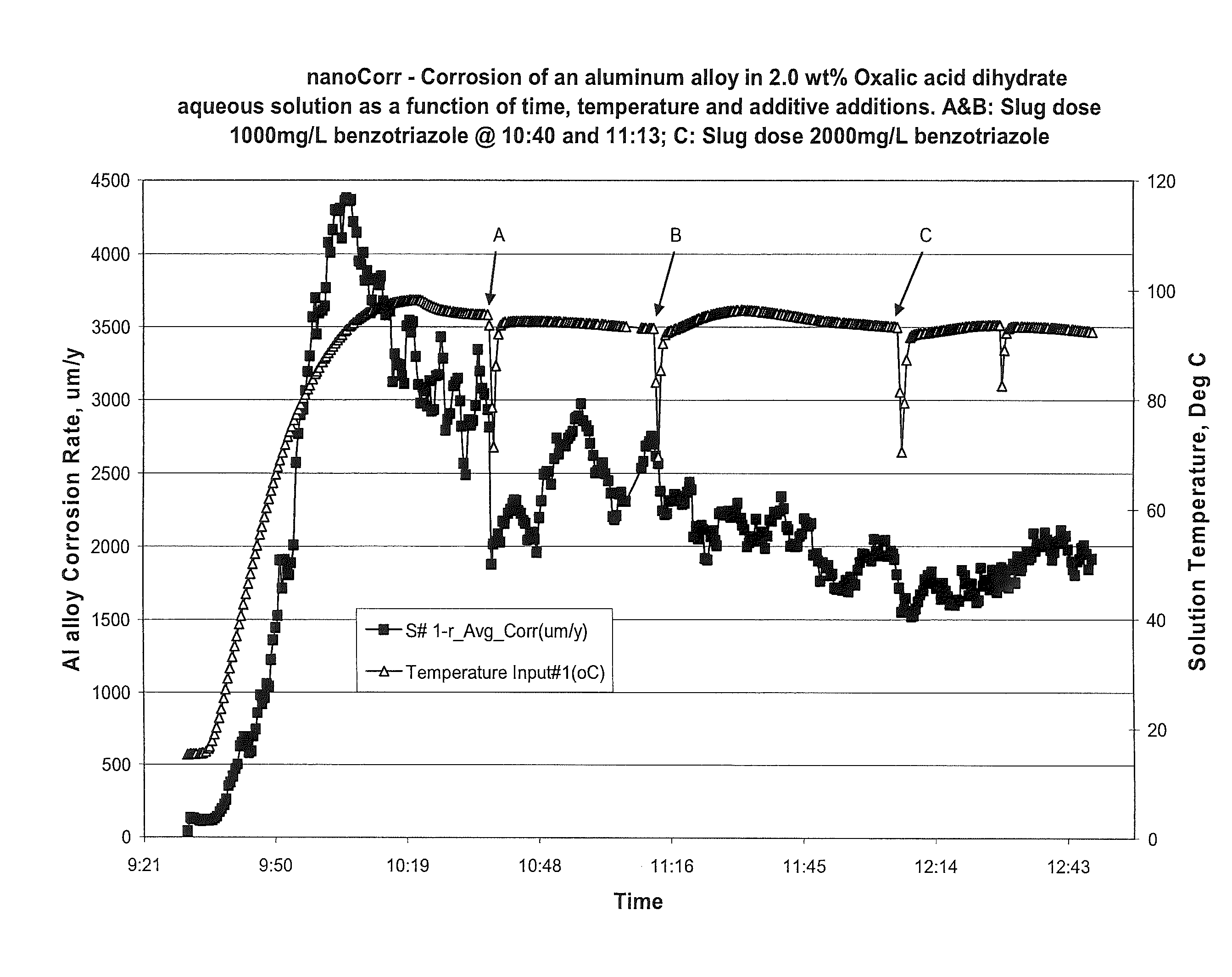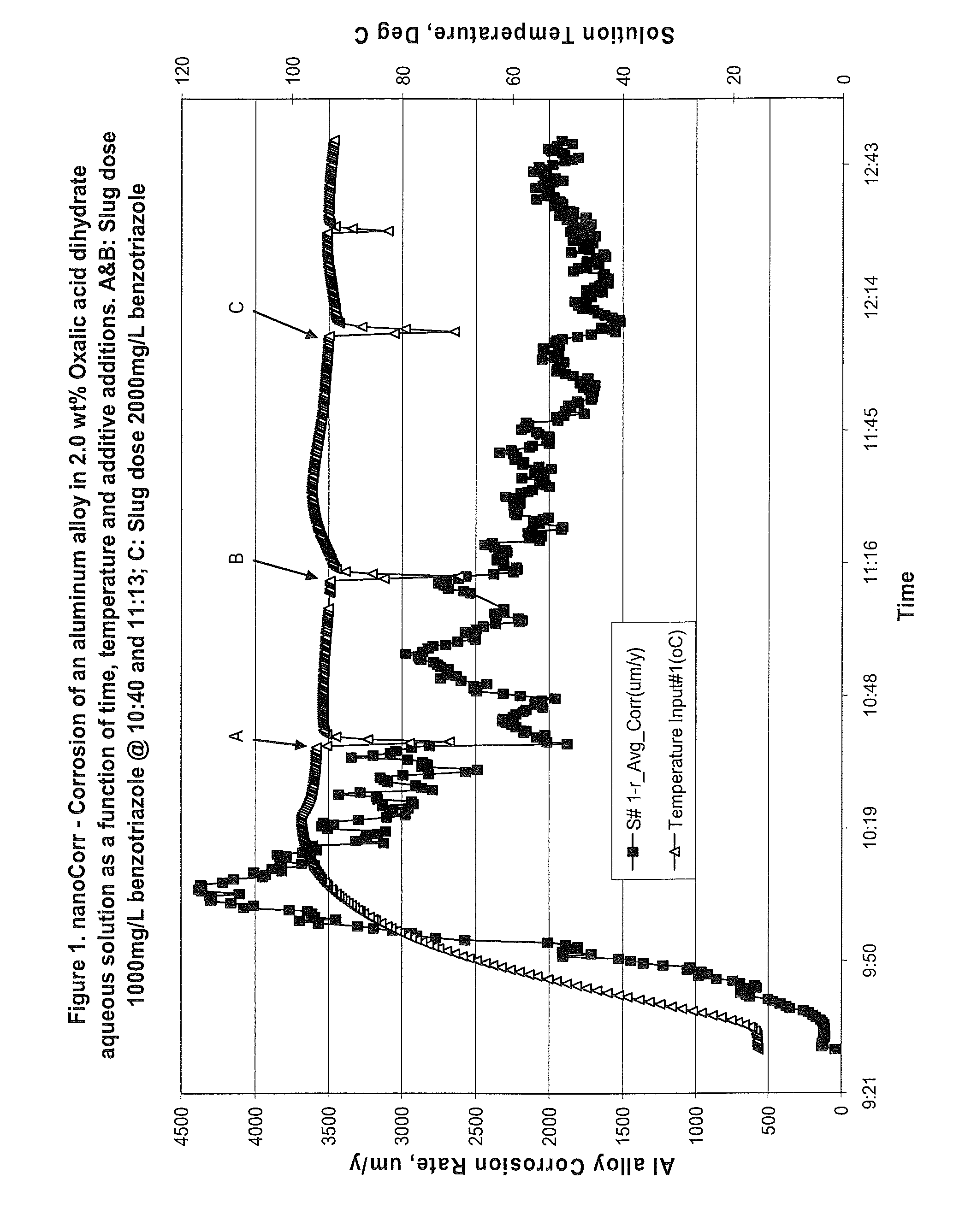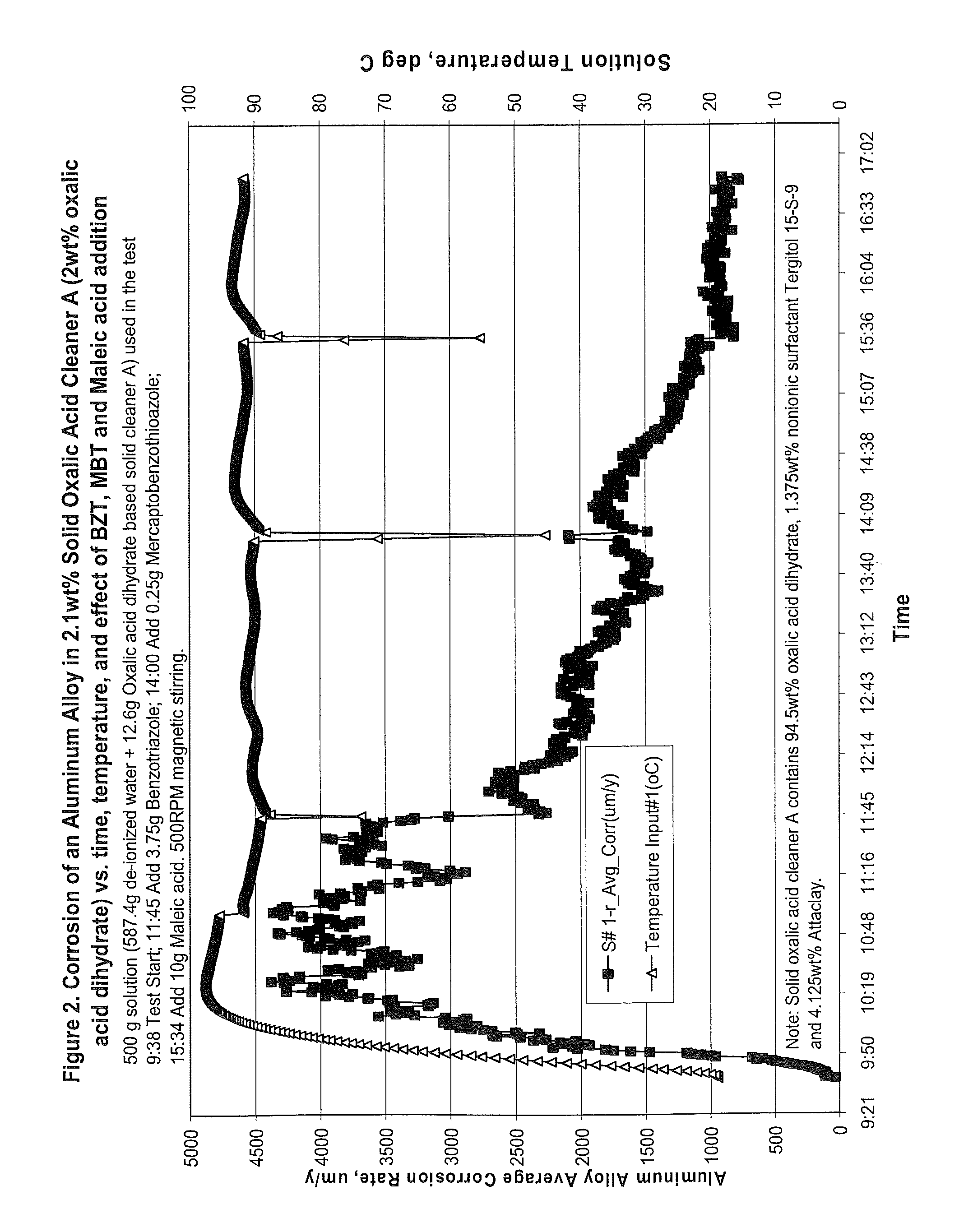Methods and composition for cleaning a heat transfer system having an aluminum component
a technology of heat transfer system and composition, which is applied in the direction of inorganic non-surface active detergent composition, flush cleaning, cleaning using liquids, etc., can solve the problems of increasing the length of corrosion and degradation of heat transfer performance of the cooling system, affecting both new and used vehicles, and reducing heat transfer performance. , to achieve the effect of reducing heat transfer performance, preventing leaching and corrosion, and maintaining or restoring heat transfer fluid flow and heat transfer performan
- Summary
- Abstract
- Description
- Claims
- Application Information
AI Technical Summary
Benefits of technology
Problems solved by technology
Method used
Image
Examples
example 1
[0068]Engine block deposits taken from a heat transfer system having an aluminum CAB component were exposed to a commercially available heat transfer system cleaner. The cleaning solutions were tested by ICP before and after contact with the deposit. This example is a comparative example. Results are shown in Table 1.
[0069]
TABLE 120% Commercial CoolingSystem Cleaner (citratebased) - Test A0.83 g of commercial coolingsystem cleaner (active: 5 wt %citric acid, pH = 9.2) + 3.17 gdeionized water + 0.0030 g ofaluminum engine deposit ina glass vial, 90 C. water bath,50 min contact time. Depositlargely remained at end ofICP, mg / Lthe test.Al20B3.36Ca9.814CuFeK5.1Mg33.7MoNa38004000P3030PbSi7.1SrZnpH>8
[0070]Example 1 shows that a commercial cleaner having citric acid is insufficient to address the problem. Notably the pH of the cleaning solution was greater than 8.
example 2
[0071]Aluminum heat exchanger tubes (type #1) blocked with corrosion products from an automotive heat transfer system having CAB aluminum components (which were not cleaned prior to installation) were exposed to various cleaning solutions for evaluation as described in Table 2. The cleaning solution was analyzed by inductively coupled plasma mass spectrometry (ICP) before and after exposure to the blocked tubes. Some tubes were cut open on one side prior to testing so that the cleaning fluid was applied by a pipette streaming solution over the opened tube interior surface. Some tubes were not cut open. The unopened tubes were cleaned by slowly adding the cleaning solution to one end of the tube (i.e., the entrance end). The cleaning solution flowed out of the tube from the other end (i.e., the exit end). The appearance of the “opened” tube was visually evaluated before and after cleaning Closed tubes were opened for inspection after cleaning. The cleaning solution was heated to abou...
example 3
[0074]Aluminum heat exchanger tubes (type#2) blocked with corrosion from an automotive heat transfer system having CAB aluminum components (which were not cleaned prior to installation) were exposed to various cleaning solutions for evaluation as described in Table 3. The cleaning solution was analyzed by inductively coupled plasma mass spectrometry (ICP) before and after exposure to the blocked tubes. The appearance of the tube was visually evaluated before and after cleaning. The cleaning solution was heated to 90° C. and applied to the tube while hot. The temperature listed in the table for each test is lower than 90° C. due to the cooling effect of the heat exchanger tube after the cleaning solution of was in the contact with the tube surface.
[0075]
TABLE 3Open tube SectionOpen tube SectionClosed whole tubeABC2.0% Oxalic Acid2.0% Oxalic Acid260 g of 2.0 wt % Oxalic aciddihydrate + 0.1 wt %dihydrate + 0.1 wt %dihydrate + 0.15 wt %benzotriazole, 50 g solutionbenzotriazole + 0.2 wt ...
PUM
| Property | Measurement | Unit |
|---|---|---|
| pKa | aaaaa | aaaaa |
| pKa | aaaaa | aaaaa |
| pKa | aaaaa | aaaaa |
Abstract
Description
Claims
Application Information
 Login to View More
Login to View More - R&D
- Intellectual Property
- Life Sciences
- Materials
- Tech Scout
- Unparalleled Data Quality
- Higher Quality Content
- 60% Fewer Hallucinations
Browse by: Latest US Patents, China's latest patents, Technical Efficacy Thesaurus, Application Domain, Technology Topic, Popular Technical Reports.
© 2025 PatSnap. All rights reserved.Legal|Privacy policy|Modern Slavery Act Transparency Statement|Sitemap|About US| Contact US: help@patsnap.com



